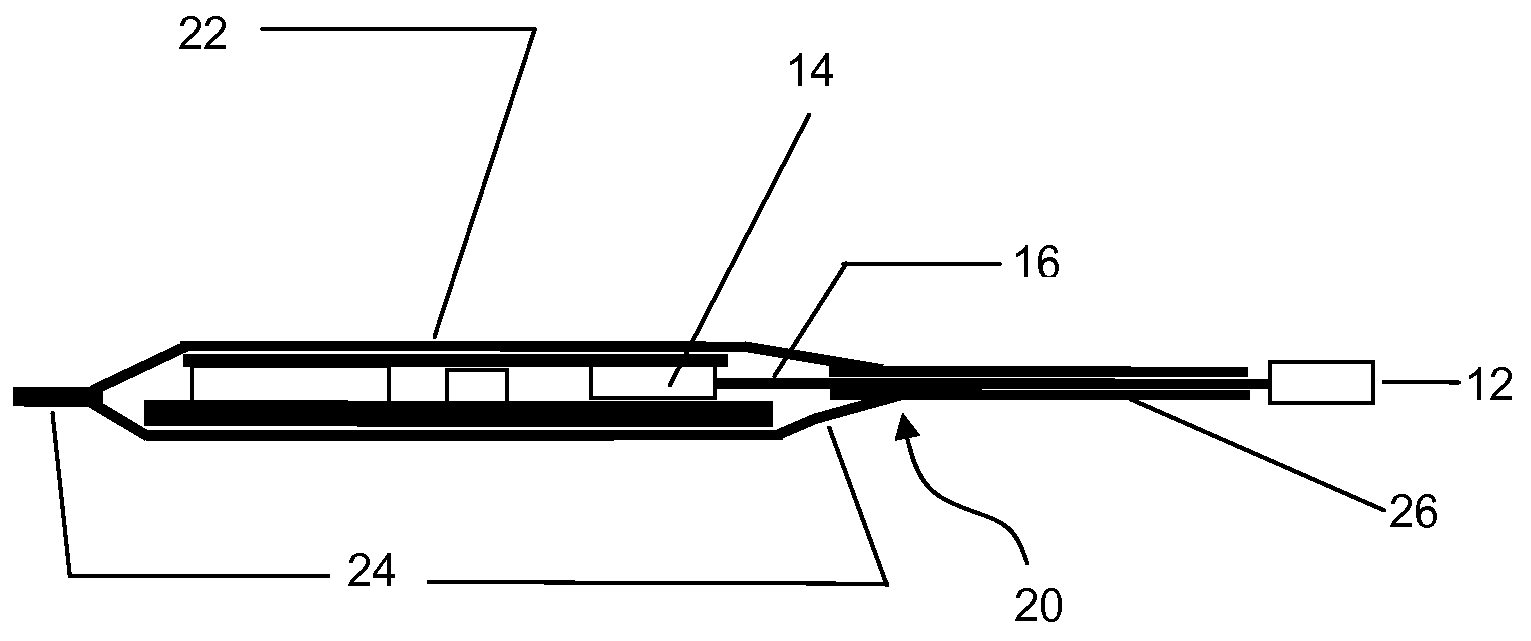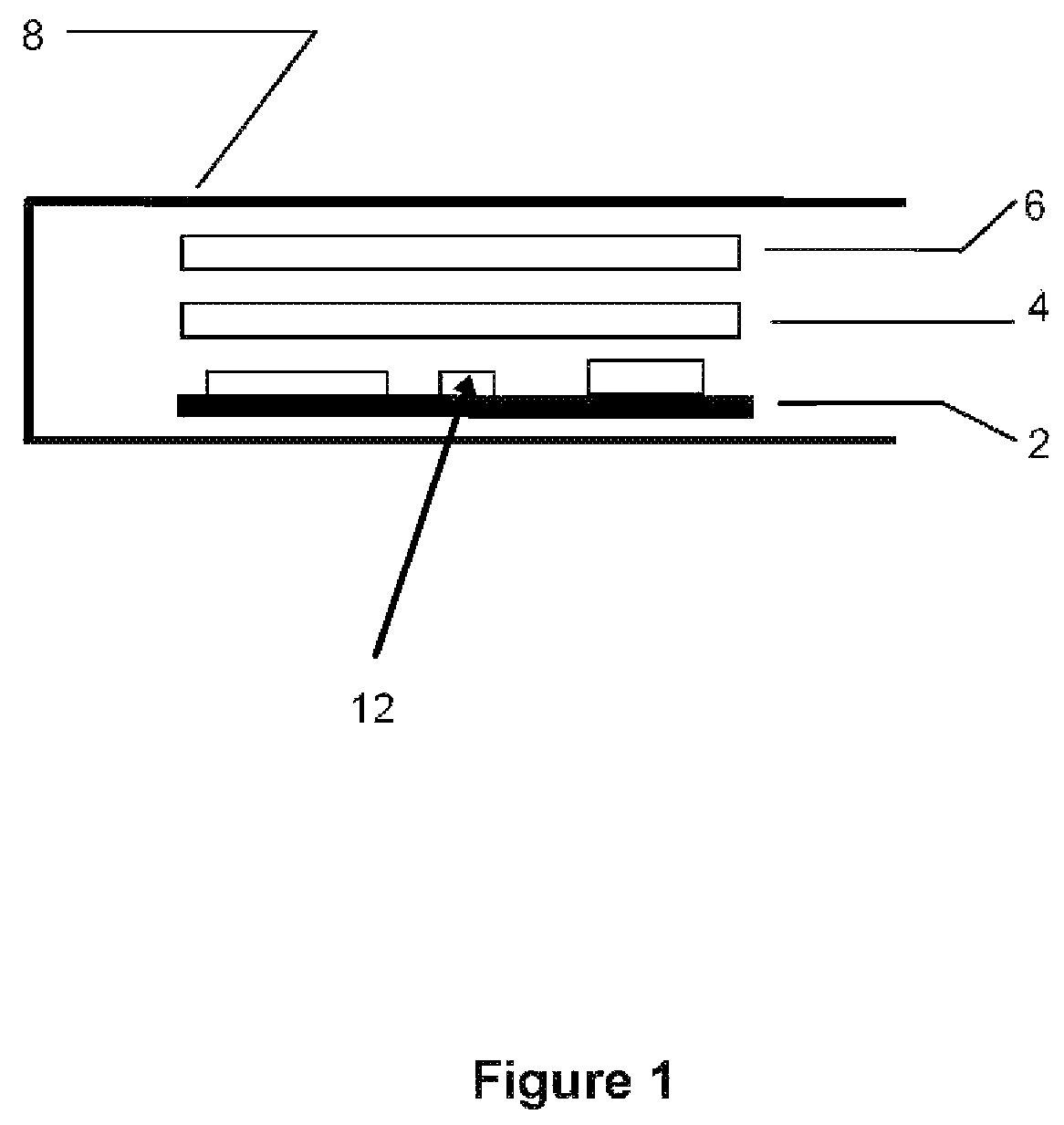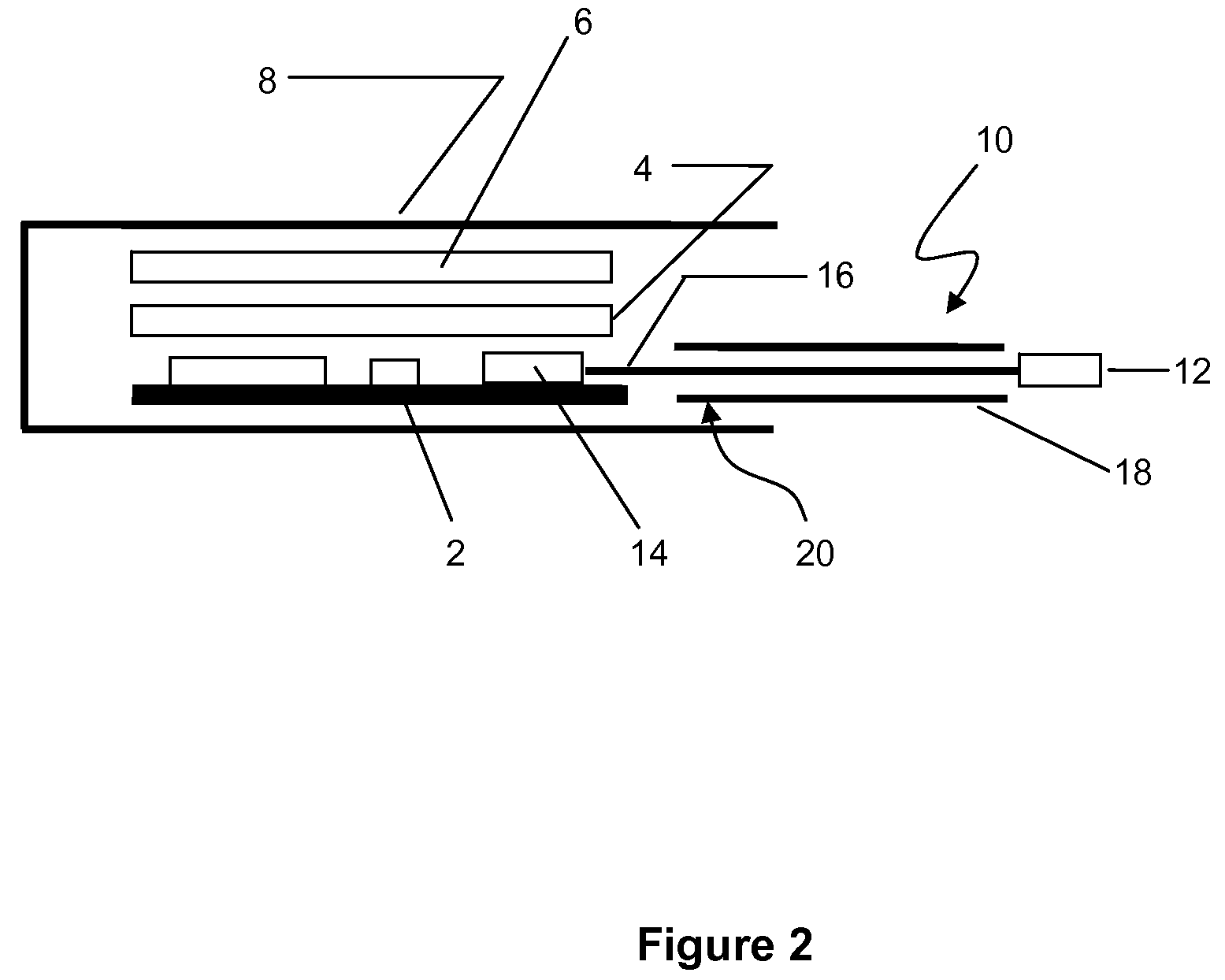Environment monitoring and recording tag with remote sensing capability
a technology of remote sensing and environmental monitoring, applied in the direction of electromagnetic radiation sensing, mechanical actuation of burglar alarms, instruments, etc., can solve the problems of significant degradation of the accuracy of the tag, limited onboard computational power of such devices, and large size of most such devices, so as to reduce the uncertainty of the package's subsequent environment history, reduce the uncertainty of battery discharge, and increase the accuracy of temperature monitoring.
- Summary
- Abstract
- Description
- Claims
- Application Information
AI Technical Summary
Benefits of technology
Problems solved by technology
Method used
Image
Examples
Embodiment Construction
[0030]Referring to FIG. 1, an environment monitoring tag 2 comprising electronic components mounted on a substrate is covered by a layer of protective foam 4 over which is located an ESD layer 6 to reduce static buildup. The sandwich comprising tag 2, foam 4 and ESD layer 6 is inserted in a suitably-sized pouch or envelope 8 of food or pharmaceutical grade heat sealable flexible plastic. In one of its embodiments heat and pressure are applied to the perimeter of the sandwich sealing the elements into a waterproof unit.
[0031]In parallel to the claims hereinafter, the tag 2 includes an integrated circuit thereon, including memory, an antenna device for RF transmission of data acquired by the integrated circuit, a sensor 12 sensing environmental conditions to which the sensor 12 is subjected. The sensor 12 provides signals based on the environmental conditions to the integrated circuit. Sensor thermistor device 12 is provided for increasing the accuracy of the tag wherein the thermisto...
PUM
 Login to View More
Login to View More Abstract
Description
Claims
Application Information
 Login to View More
Login to View More - R&D
- Intellectual Property
- Life Sciences
- Materials
- Tech Scout
- Unparalleled Data Quality
- Higher Quality Content
- 60% Fewer Hallucinations
Browse by: Latest US Patents, China's latest patents, Technical Efficacy Thesaurus, Application Domain, Technology Topic, Popular Technical Reports.
© 2025 PatSnap. All rights reserved.Legal|Privacy policy|Modern Slavery Act Transparency Statement|Sitemap|About US| Contact US: help@patsnap.com



